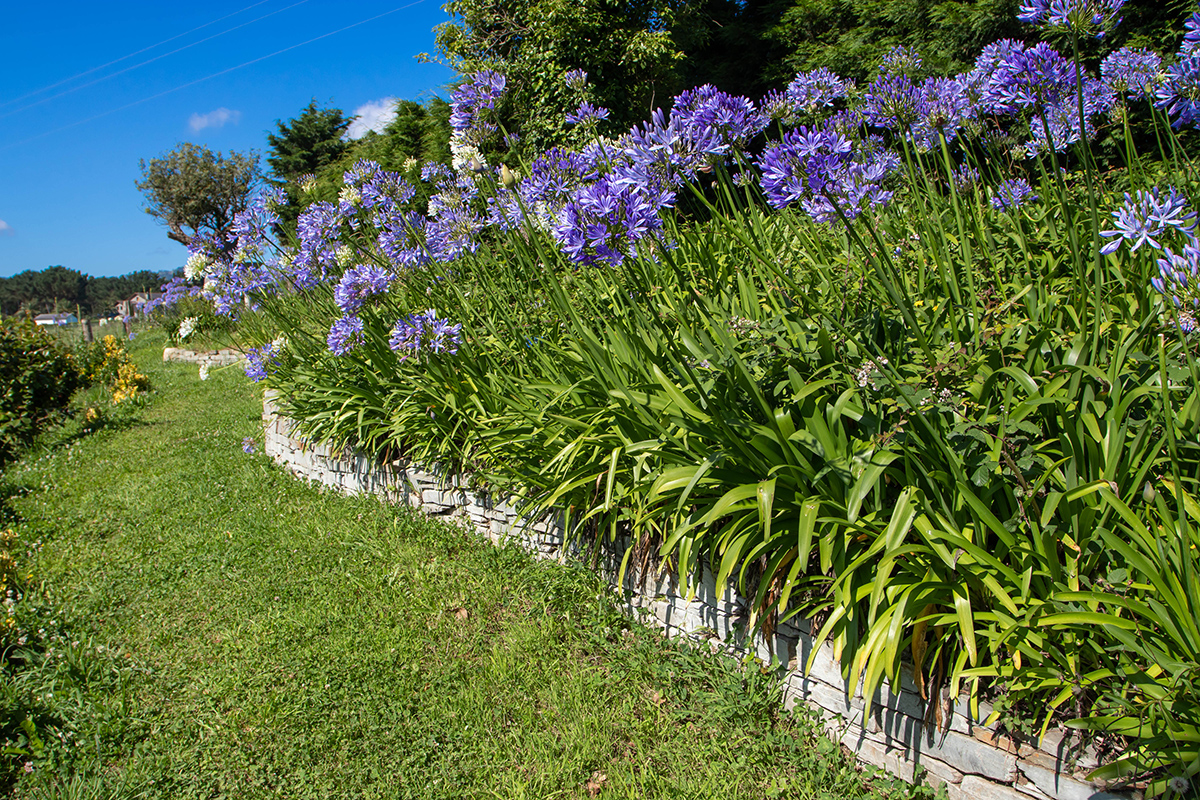How to Plant and Maintain Agapanthus in Your Garden
Wiki Article
Mastering the Art of Agapanthus Care: Vital Steps for Healthy And Balanced Growth and Vibrant Blossoms
In the realm of gardening, the growing of agapanthus stands as a gratifying venture for those that look for to support these sophisticated flowering plants. From selecting the right variety to understanding pruning techniques, the journey towards growing growing agapanthus plants is diverse and holds the key to opening the full capacity of these organic treasures.
Choosing the Right Agapanthus Range

When picking the right Agapanthus range for your yard, take into consideration factors such as environment viability, bloom shade, and growth routine. Agapanthus, frequently called Lily of the Nile or African lily, comes in a variety of colors varying from shades of blue and purple to white. Select a bloom color that matches your existing yard scheme to create an unified landscape. Additionally, take into consideration the environment in your area to make sure the Agapanthus selection you pick can grow in your particular problems. Some varieties are a lot more forgiving of cold temperatures, while others choose warmer climates. Recognizing the development practice of different Agapanthus varieties is crucial for proper positioning within your yard. Some ranges have a clumping development routine, perfect for borders or containers, while others have a more spreading nature, appropriate for ground cover or mass plantings. By meticulously assessing these variables, you can select the ideal Agapanthus variety to improve the beauty of your garden.
Ideal Growing Conditions
Considering the optimal environmental demands is vital for successful Agapanthus cultivation. Agapanthus flourishes in well-draining dirt with a somewhat acidic to neutral pH level. When planting, choose a place that receives complete sunshine to partial shade. In hotter environments, supplying some mid-day color can stop scorching of the fallen leaves. Agapanthus plants are delicate to cold temperatures and need to be secured from frost during winter months.To make sure healthy and balanced growth and vibrant blooms, plant Agapanthus light bulbs at a depth of concerning 2-4 inches and space them 8-12 inches apart. Adding natural issue, such as garden compost, to the dirt can enhance drainage and fertility, advertising durable root growth. Mulching around the base of the plants helps retain dampness and suppresses weed development. Routine watering is crucial, especially throughout the expanding season, to maintain the dirt regularly moist yet not saturated.
Watering and Fertilizing Tips
Keeping proper wetness levels and offering important nutrients are vital aspects in the treatment program for Agapanthus plants. When it comes to watering Agapanthus, it is crucial to strike an equilibrium. These plants choose continually moist dirt but are at risk to root rot if overwatered.Feeding Agapanthus is essential for promoting healthy development and respected flowers. Use a balanced plant food, such as a 10-10-10 formula, in the very early springtime as new development emerges. By adhering to these watering and fertilizing pointers, you can ensure your Agapanthus plants prosper and create dynamic, resilient flowers.
Trimming Techniques for Agapanthus
Trimming Agapanthus plants at the proper times and with appropriate techniques is critical for preserving their health and wellness and advertising optimal development and blooming. The excellent time to prune Agapanthus is in late winter season or early springtime before new growth arises.For flowered stems, wait up until the blossoms have actually perished and after that trim them back to the base. This not just cleans the plant's look but likewise motivates the advancement of new flower buds. Deadheading spent blossoms can also redirect the plant's power right into generating even more flowers instead than establishing seeds. Nevertheless, if you wish Discover More Here to gather seeds for propagation, leave some blossoms to fully grown and completely dry on the plant.
Remember to make use of click for info clean, sharp devices to make specific cuts and reduce the threat of presenting conditions. Agapanthus. Regular trimming will certainly assist keep your Agapanthus looking healthy and neat while guaranteeing a plentiful display of beautiful blooms
Taking Care Of Common Insects and Illness
After guaranteeing appropriate pruning methods for Agapanthus, it is important to attend to typical insects and diseases that can influence the wellness and vigor of these plants. Agapanthus plants are typically durable yet can still succumb to specific issues. One typical insect that affects Agapanthus is the Agapanthus gall midget. This tiny, orange fly lays its eggs in the vegetation, leading to altered growth and blossom buds that stop working to open. To fight this pest, trim and damage any kind of affected plant parts and consider using insecticidal soap.Furthermore, Agapanthus plants can suffer from origin rot if they are grown in poorly draining pipes soil. By being attentive and taking prompt activity versus parasites and illness, you can assist your Agapanthus plants thrive and produce dynamic blooms. Agapanthus.

Conclusion
Finally, mastering the art of agapanthus treatment entails choosing the ideal range, supplying suitable growing problems, appropriate watering and feeding, proper trimming methods, and resolving usual pests and diseases. By adhering to these vital actions, you can guarantee healthy and balanced growth and lively blossoms for your agapanthus plants. Remember to regularly monitor and preserve your plants to promote their general well-being and durability.To guarantee healthy growth and dynamic blossoms, plant Look At This Agapanthus bulbs at a deepness of concerning 2-4 inches and space them 8-12 inches apart. By complying with these watering and feeding ideas, you can ensure your Agapanthus plants thrive and create lively, lasting blooms.
One common pest that affects Agapanthus is the Agapanthus gall midget. In addition, Agapanthus plants can suffer from root rot if they are planted in improperly draining pipes soil. By following these vital steps, you can make sure healthy and balanced development and vibrant flowers for your agapanthus plants.
Report this wiki page